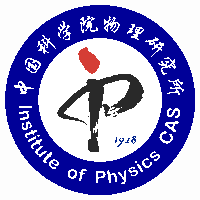III-V nanostructures and devices monolithically grown on silicon substrates
22 April 2013. Invited by Prof. Xiulai Xu, Professor Huiyun Liu from Department of Electronic & Electrical Engineering, University College London visited us and gave a talk on "III-V nanostructures and devices monolithically grown on silicon substrates".
Abstract: Direct epitaxial growth of III-V nanostructures on Si substrates is one of the most promising candidates for realizing photonic devices on a Si platform. In this presentation, the growth of III-V quantum dots (semiconductor nanosized crystal) and nanowires on Si substrates and their applications in communications and solar energy will be discussed. I will describe new grown techniques developed at University College London (UCL) for the formation of III-V buffer layers grown directly on Ge, Si and Ge/Si substrates by Molecular Beam Epitaxy (MBE). These processes suppress the formation of threading dislocations and anti-phase boundaries leading to high quality quantum dot laser diodes operating at technologically important telecommunications wavelengths. This work has lead to the first room-temperature continuous-wave operation of InAs/GaAs QD lasers grown on Si substrates operating at room temperature at 1285nm with very low electrically pumped threshold current density of 64.3A/cm2 and lasing up to 84oC. In the second part of the presentation, I will describe our recent work on 1.7eV core-shell GaAsP nanowire growth by MBE for silicon-based two-junction solar cells. The GaAsP nanowires are fabricated by the Ga-droplet assisted nanowire growth. A record efficiency of >10% for a single core-shell GaAsP nanowire solar cell was demonstrated.
Professor Huiyun Liu (Resume):
Professor Huiyun Liu received his PhD form Institute of Semiconductor, Chinese Academy of Sciences at November 2001. After receiving his PhD, he joined the EPSRC National Centre for III-V Technologies at Sheffield University. At Sheffield, he was responsible for the development of low-dimensional semiconductor materials and devices (such as quantum dots, quantum wells and nanowires) by using molecular beam epitaxy for the UK research community. In 2007, he was awarded Royal Society University Research Fellow on developing III-V nanostructures on silicon substrates for silicon photonics, and started his academic career by taking Senior Lecturer (as Associate Professor in US) position in the Department of Electronic and Electrical Engineering at University College London with commissioning the first new Molecular Beam Epitaxy reactor in central London. In 2012, he was promoted as Chair (As full Professor in US) of Semiconductor Photonics at University College London. His current research interest concentrates on the nanometre-scale engineering of low-dimensional semiconductor structures (such as quantum dots, nanowires, and quantum wells) by using molecular beam epitaxy and the development of novel optoelectronic devices including lasers, detectors, solar cells, and modulators by developing novel device process techniques. He co-authored more than 120 peer-reviewed journal papers and hold on several patents on silicon photonics.


